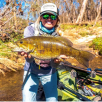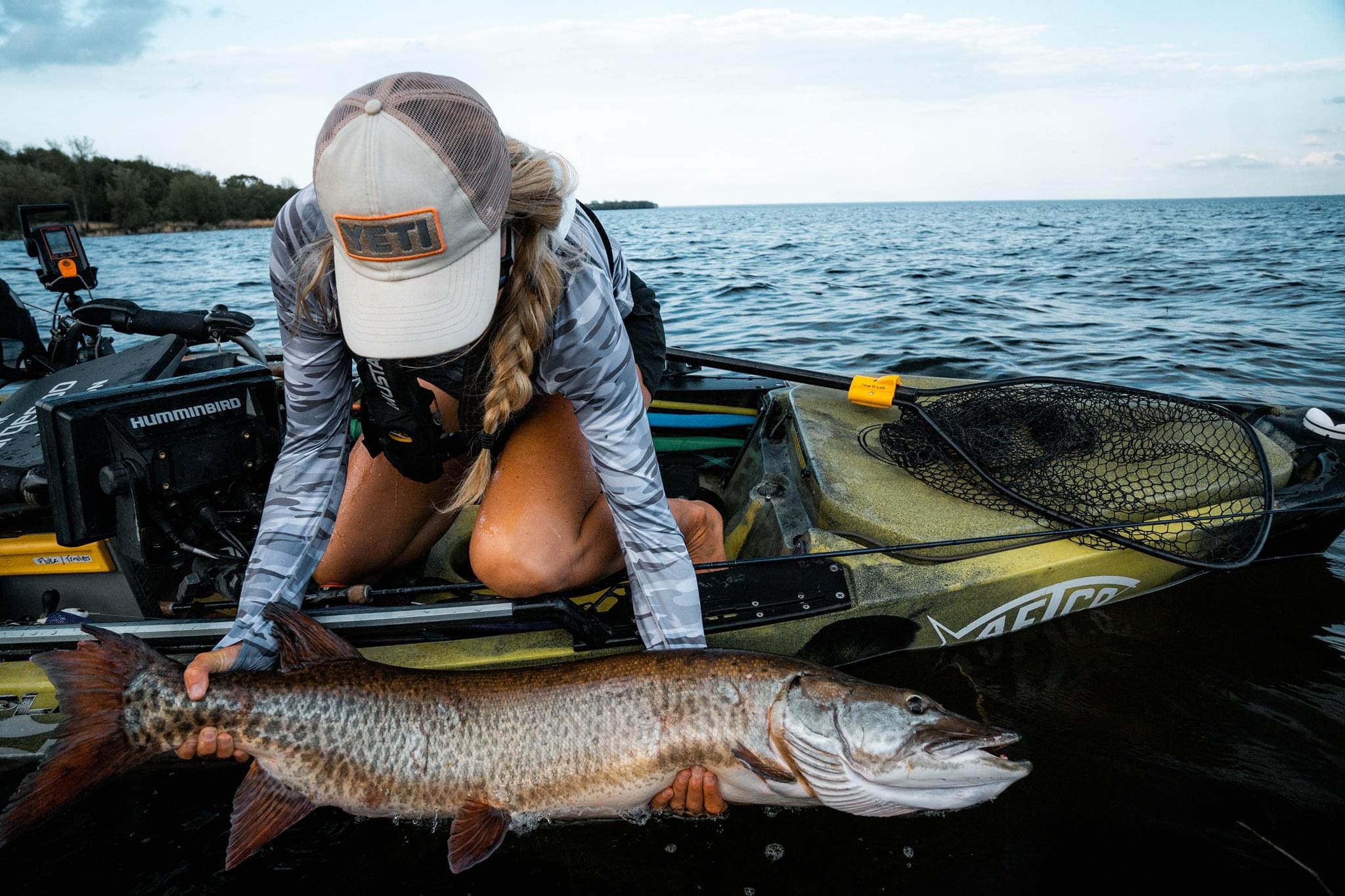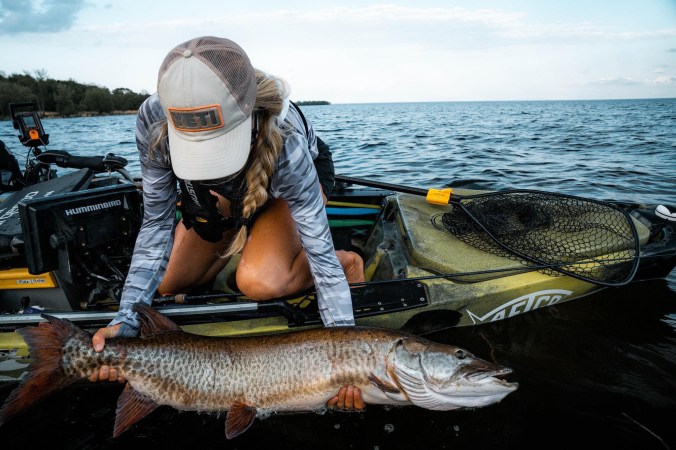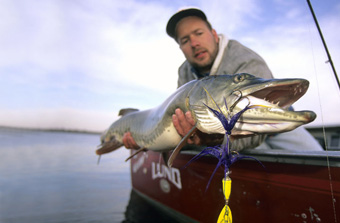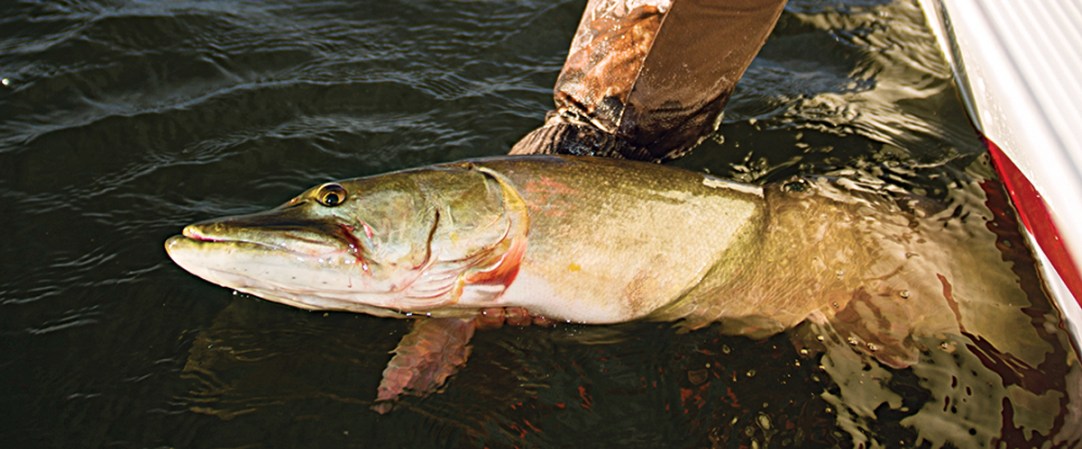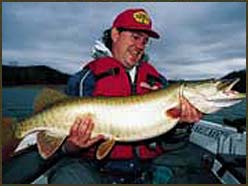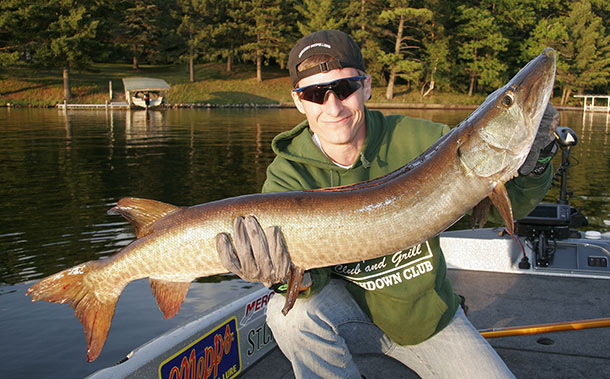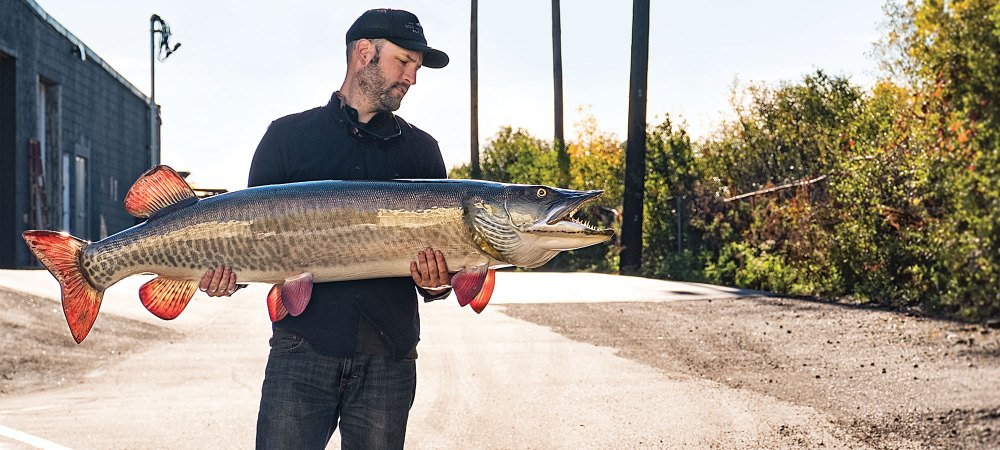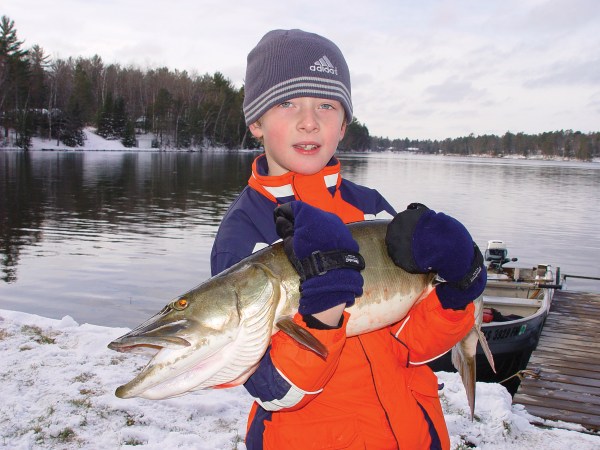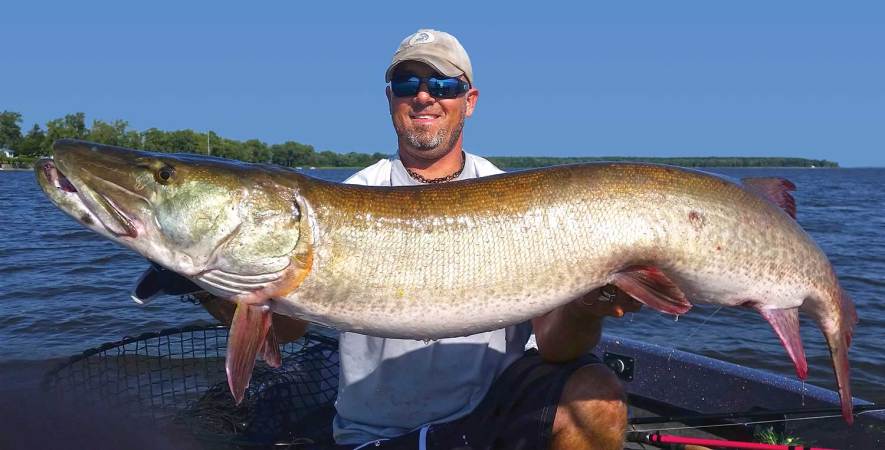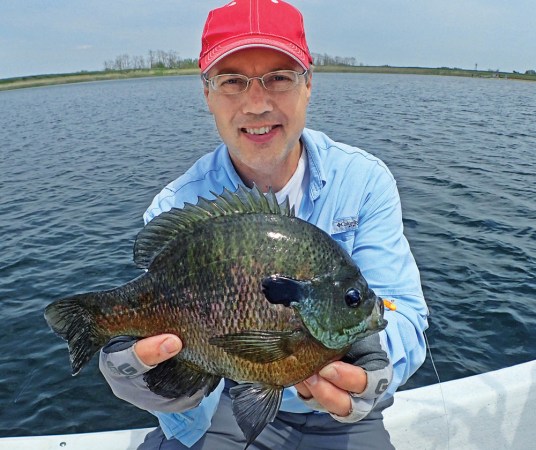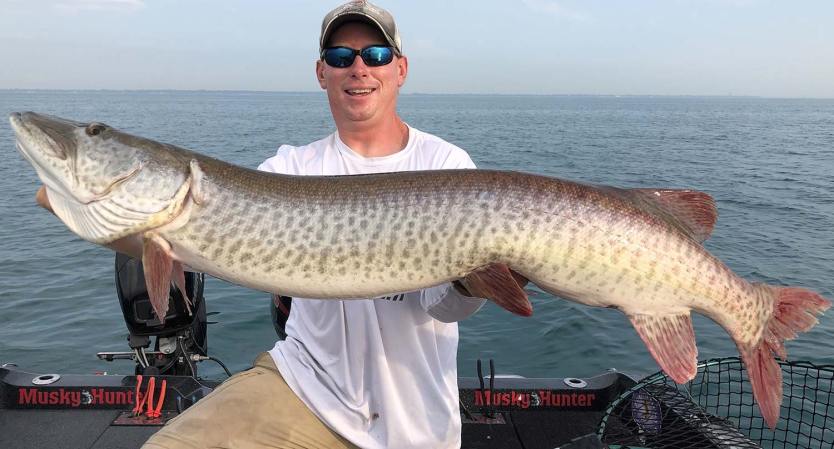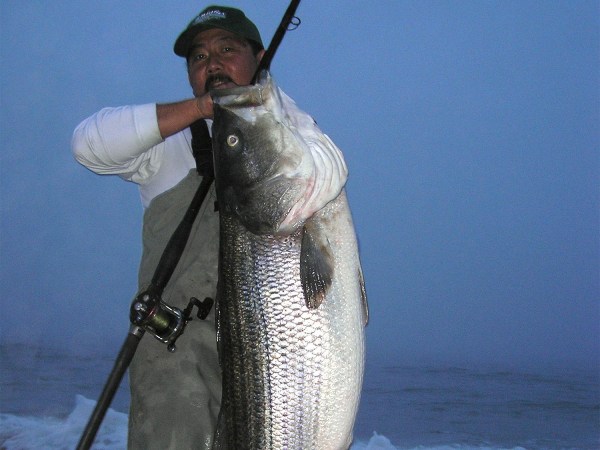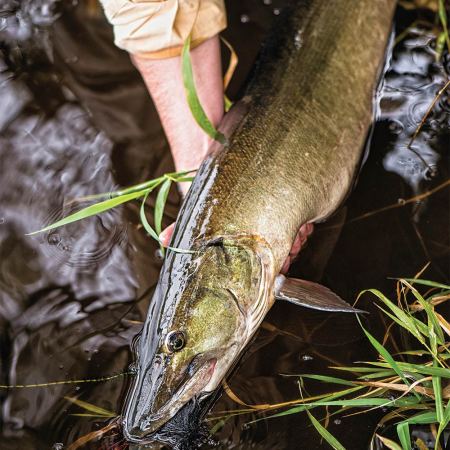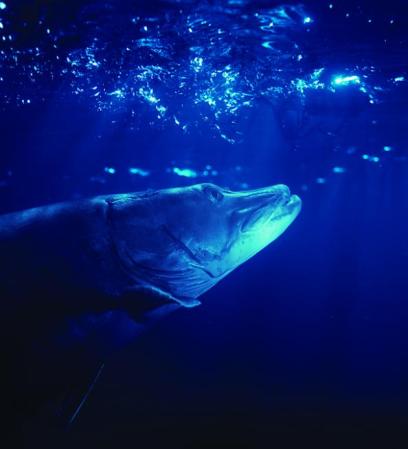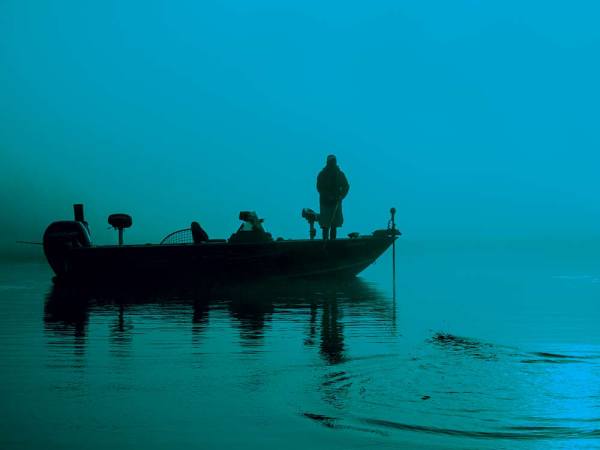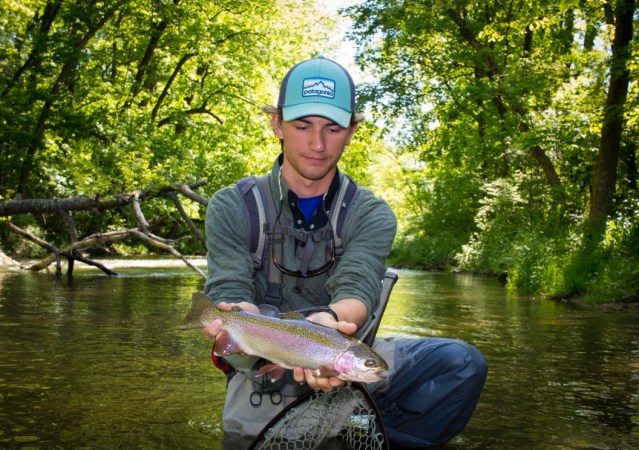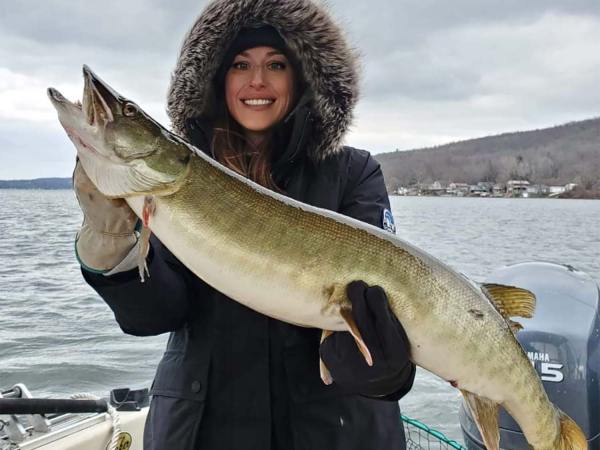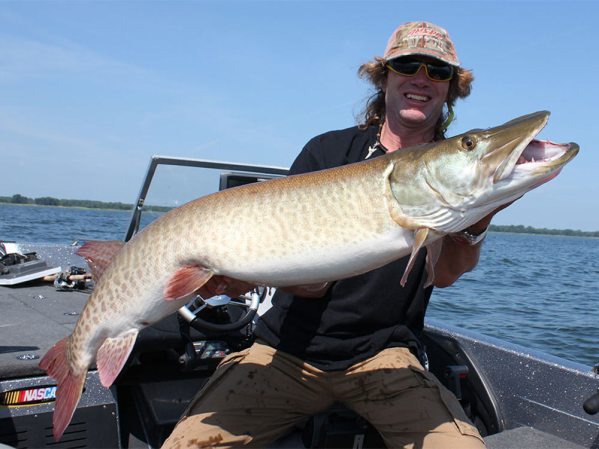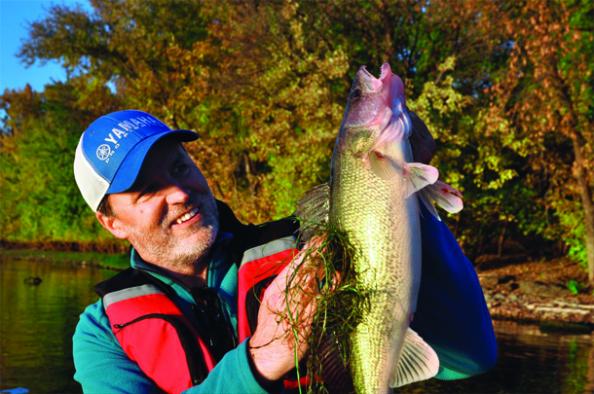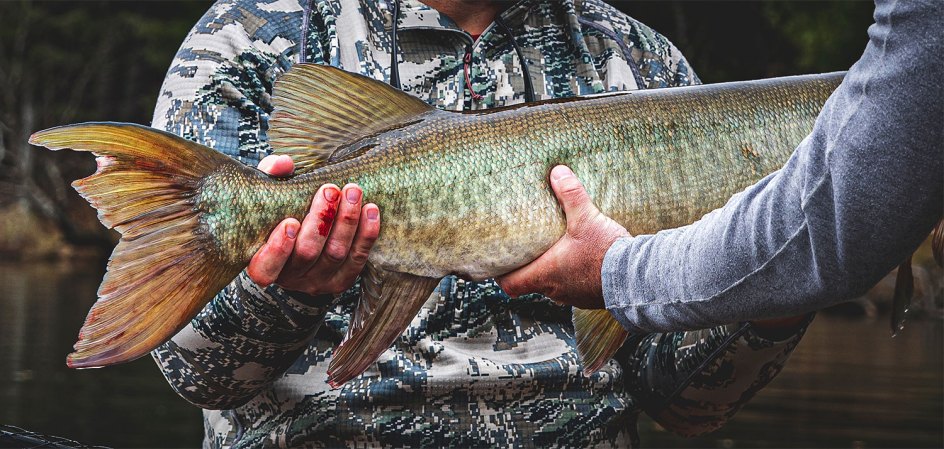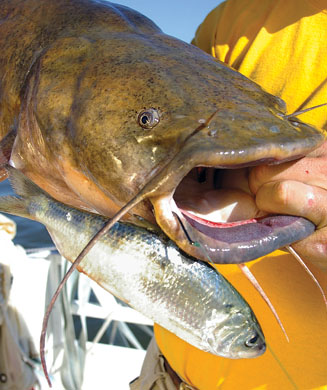We may earn revenue from the products available on this page and participate in affiliate programs. Learn More ›
Winter moves along like molasses for muskie anglers, who have been chomping at the bit for the spring opener. Luckily, the wait is over. The first few weeks of the season, post-spawn muskie can be found lurking in shallow bays, foraging for bait fish, and taking advantage of warmer water temperatures.
Many anglers fall victim to the traditional “go big or go home” mindset for these freshwater predators this time of year. They forget that smaller baits can usually outperform larger ones. There’s a reason you’ll start seeing bass anglers report increased muskie activity on small bass profiles in late May and early June.
Here are a few key baits to keep in your arsenal for spring-time muskies.
Use a Spinner Bait for Muskie
The Bucher Tail 500 series bucktail is a smaller version of Bucher’s original 700 series, and comes in a variety of color options. This bucktail features a single, fluted blade and is the perfect size for early-season muskie and big northern pike, especially if they are keying in on smaller forage. This bait is most effective when an angler wants to cover water and comb weed beds quickly and effectively. Because the blade is smaller, it allows anglers to fish the longer days without fatigue.
Muskie Rod and Reel Setup
A great rod option for small bucktails is the St Croix 8’6” Medium Heavy Fast Mojo Musky rod. This rod can handle a variety of small twitch baits, crank and jerk baits, as well as small bucktails, making it a versatile spring rod to add to the collection. At 8.6 feet, you get the right amount of length to make long casts and make big figure 8’s, while also using a little lighter rod that’s more manageable.
When it comes to reels, you want something that’s easy to cast and retrieve while burning bucktails. The Abu Garcia Revo Toro Beast low profile reel satisfies these needs. I run 65-pound braid and a 6.8-foot, 124-pound test wire leader with a ball bearing swivel. This lighter leader helps smaller baits maintain their action, whereas heavier leaders might reduce the action.
Try a Trolling Bait When the Bite Slows
When the fish aren’t on those 10-inch cranks, the Llungen .22 Short is my go-to. This 5.5-inch bait has caught fish all over the country. Though most anglers might prefer trolling this bait, it also makes for a great casting bait when muskies are hanging around wood, rocks, and other transition points. Casting this bait allows you to methodically work these areas, where as trolling gives you the upper hand when you’re wanting to cover water. The .22 Short is infamous for its ability to hunt, and has a subtle rattle that helps attract more fish.
The the best rod to throw this bait on is the St Croix LipStick 7’9” heavy casting rod. The length helps cast lighter baits further, and the rod features a moderate fast action that helps prevent the fish from throwing these treble hook cranks, but also has enough backbone to control big muskie and pike. I’ll pair this with a Shimano Tranx 300, 50- or 65-pound braid, and an 80-pound fluorocarbon leader.
The Most Exciting Bite

Top water baits offer the most thrilling bite to anglers. There’s nothing more exciting that a predator fish striking at the surface. Anglers shouldn’t be married to the idea of a “one size fits all” top water lure. Conditions are going to dictate what you should use. Each top-water bait has a different sound and vibration, and this is key to triggering muskie. A few baits to have in your tackle box are the Lake X Lures Fat Bastard, H2O 6” Ortin, River2Sea Whopper Plopper, and a Lee Lures Mini-Boilermaker. You’ll want to vary these baits regularly to see what’s working best. The last few hours of the day, and overcast days, are best for top-water fishing. Stick to the edges. Water slicks, weed edges, current breaks, and similar spots are where these baits really shine.
Read Next: Want to Catch a Muskie on a Fly Rod? Never Give Up
Remember, there is no proven science or method that can promise success in muskie fishing. Your best bet as an angler is to continue to experiment on the water, taking note of weather and water changes. Utilizing this information, along with following Solunar charts and moon phases can help you get to your best waters at the best times of the day to maximize success and increase your chances at landing the fish of 10,000 casts.
